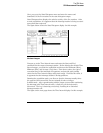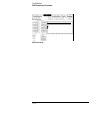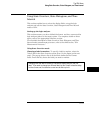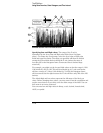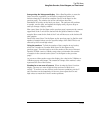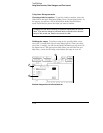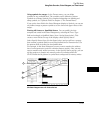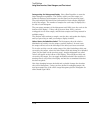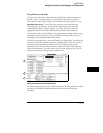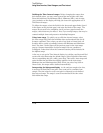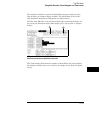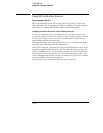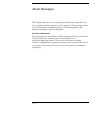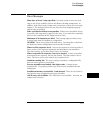
Using Time Interval mode
Use Time Interval mode to determine the distribution of time between two
specific events. The state analyzer uses the time tag feature to time the
event; thus, in Time Interval mode, the minimum state clock period is 10 ns.
Specifying an event
To use Time Interval mode, you must define an
event that you want timed. At the bottom of the display, note the Start
and End fields (item 1 in figure below). To define an event, select the
appropriate labels in the Start and End fields to define the boundaries.
For example, start and end might be the beginning and ending addresses of a
subroutine stored in memory. If you are timing a counter period, start and
end might be the initial and final count values.
Note that in start and end, you are not limited to a single label. You define the
event over all available labels as patterns including don’t cares. Be sure that
the start and end conditions actually occur in the target system or the
analyzer will not find the timing reference points and will not make the time
interval measurement. You may want to use the state analyzer (not SPA) to
verify that the Start and Stop events actually occur.
SPA Time Interval Menu with Fields Called Out
For measurement purposes, the analyzer measures the time between the first
occurrence of the Start condition and the first occurrence of the Stop
condition.
1
3
2
The SPA Menu
Using State Overview, State Histogram, and Time Interval
11-27



